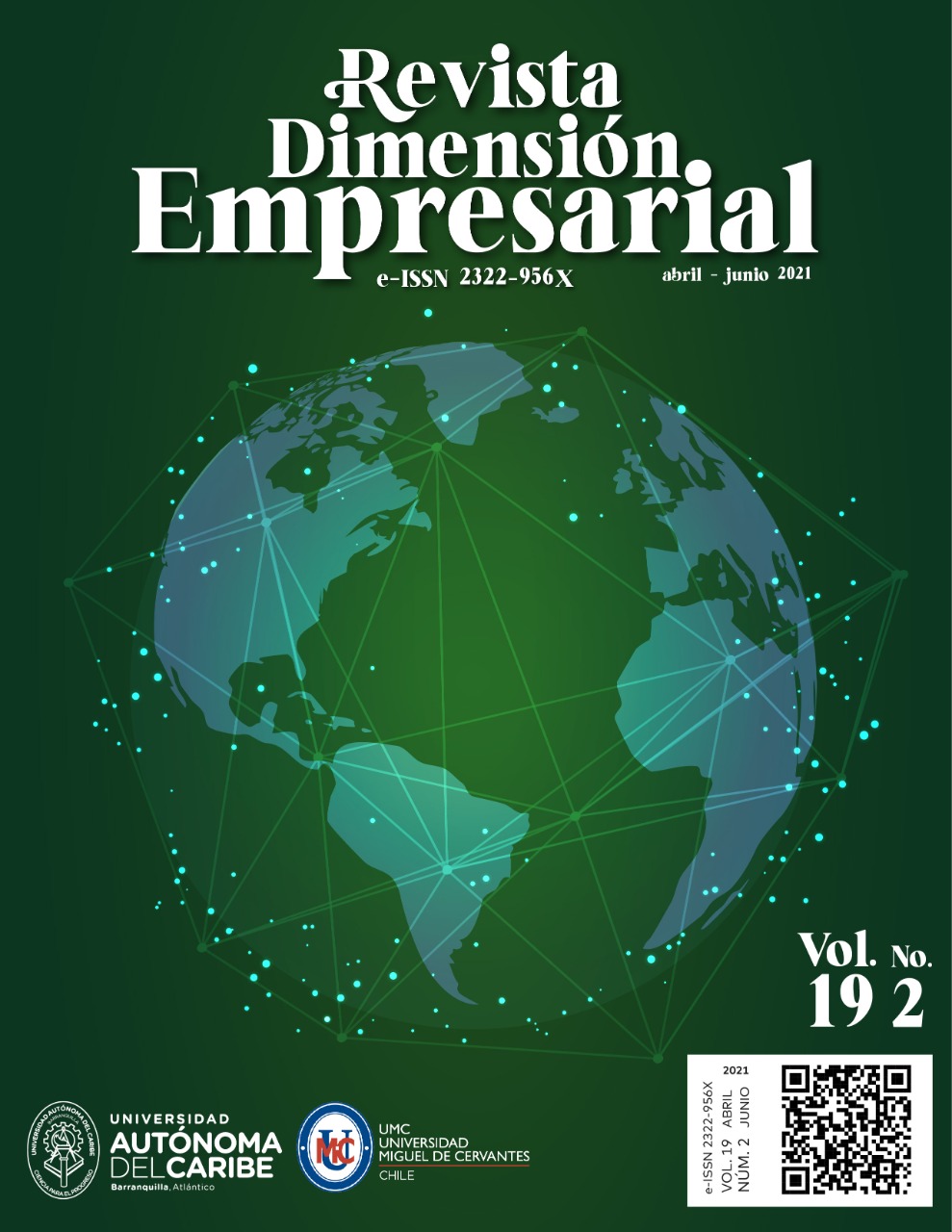Strategic Behaviour In Small Technology-Based Companies
Palavras-chave:
Dynamic Capabilities, Organizational Resources, External Environment, Micro and Small technology-based CompaniesResumo
This work aims to contribute to the literature on strategic management in micro and small technology-based companies, by identifying the main characteristics of strategic behavior. The research method used was qualitative, which was based on case studies. Research indicates which strategic behavior in micro and small technology-based companies covers the definition of competitive and innovation strategies and allocation of organizational resources in order to innovate and to develop dynamic capabilities, by detecting changes in the external environment, by seizing, and by reconfiguring resources in order to help these companies to adapt to market demands and to obtain competitive advantages.
Referências
Adam, M., Strähle, J., & Freise, M. (2018). Dynamic capabilities of early-stage firms: exploring the business of renting fashion. Journal of Small Business Strategy, 28(2), 49-67.
Babelytė-Labanauskė, K., & Nedzinskas, Š. (2017). Dynamic capabilities and their impact on research organizations’ R&D and innovation performance. Journal of Modelling in Management, 12(4), 603–630.
Barney, J. B., & Hesterly, W. S. (2008). Administração estratégica e vantagem competitiva. São Paulo: Pearson Prentice Hall.
Carvalho, D. M., Prévot, F., & Machado, J. A. D. (2014). O uso da teoria da visão baseada em recursos em propriedades rurais: uma revisão sistemática da literatura. Revista de Administração, 49(3), 506–518.
Cho, C., Park, S. Y., Son, J. K., & Lee, S. (2017). Comparative analysis of R&D-based innovation capabilities in SMEs to design innovation policy. Science and Public Policy, 44(3), 403–416.
Côrtes, M. R., Pinho, M., Fernandes, A. C., Smolka, R. B., & Barreto, A. L. C. M. (2005). Cooperação em empresas de base tecnológica: uma primeira avaliação baseada numa pesquisa abrangente. São Paulo em Perspectiva, 19(1), 85-94.
Dobni, C. B., & Sand, C. (2018). Strategy shift: integrating strategy and the firm’s capability to innovate. Business Horizons, 61(5), 797-808.
Eisenhardt, K. M., & Martin, J. A. (2000). Dynamic capabilities: what are they? Strategic Management Journal, 21(10–11), 1105–1121.
Franco, M., & Haase, H. (2010). Information sources for environmental scanning: do industry and firm size matter? Management Decision, 49(10), 1642–1657.
Froehlich, C., Bitencourt, C. C., & Bossle, M. B. (2017). The use of dynamic capabilities to boost innovation in a Brazilian chemical company. Revista de Administração da USP, 52(2), 479-491.
Greneheim, U. H., & Lundman, B. (2004). Qualitative content analysis in nursing research: concepts, procedures and measures to achieve trustworthiness. Nurse Education Today, 24(2), 105-112.
Haapanen, L., Hurmelinna-Laukkanen, P., & Hermes, J. (2018). Firm functions and the nature of competitive advantage in internationalizing SMEs. International Journal of Innovation Management, 22(3), 1850022-1 – 1850022-30.
Herrmann, J. D., Sangalli, L. C., & Teece, D. J. (2017). Dynamic capabilities: fostering an innovation-friendly environment in Brazil. Revista de Administração de Empresas, 57(3), 283–287.
Hitt, M. A., Ireland, R. D., & Hoskisson, R. E. (2008). Administração Estratégica. (2a ed.). São Paulo: Cengage Learning.
Jeng, D. J. F., & Pak, A. (2016). The variable effects of dynamic capability by firm size: the interaction of innovation and marketing capabilities in competitive industries. International Entrepreneurship and Management Journal, 12(1), 115–130.
Jensen, A., & Clausen, T. H. (2017). Origins and emergence of exploration and exploitation capabilities in new technology-based firms. Technological Forecasting and Social Change, 120(1), 163–175.
Kenski, V. W., & Marcondes, R. C. (2017). O programa inovativo da pequena empresa (PIPE) da FAPESP como indutor do desenvolvimento de micro e pequenas empresas de base tecnológica. Gestão & Produção, 24(4), 667-679.
Ko, W. W., & Liu, G. (2017). Environmental strategy and competitive advantage: the role of small- and medium-sized enterprises’ dynamic capabilities. Business Strategy and the Environment, 26(5), 584–596.
Mousavi, S., & Bossink, B. A. G. (2018). Firms’ capabilities for sustainable innovation: the case of biofuel for aviation. Journal of Cleaner Production, 167(20), 1263–1275.
Nieves, J., Quintana, A., & Osorio, J. (2016). Organizational knowledge, dynamic capabilities and innovation in the hotel industry. Tourism and Hospitality Research, 16(2), 158–171.
Pan, X.; Zhang, J.; Song, M.; Ai, B. (2018). Innovation resources integration pattern in high-tech entrepreneurial enterprises. International Entrepreneurship and Management Journal, 14(1), 51-66.
Qaiyum, S., & Wang, C. L. (2018). Understanding internal conditions driving ordinary and dynamic capabilities in Indian high-tech firms. Journal of Business Research, 90(1), 206-214.
Schoemaker, P. J. H., Heaton, S., & Teece, D. J. (2018). Innovation, dynamic capabilities, and leadership. California Management Review, 61(1), 15-42.
Serviço Brasileiro de Apoio às Micro e Pequenas Empresas. (2015). Anuário de trabalho na micro e pequena empresa. Brasília: Autor. Recuperado de https://www.sebrae.com.br/Sebrae/Portal%20Sebrae/Anexos/Anuario-do%20trabalho na%20micro-e-pequena%20empresa-2014.pdf
Sheng, M. L. (2017). A dynamic capabilities-based framework of organizational sensemaking through combinative capabilities towards exploratory and exploitative product innovation in turbulent environments. Industrial Marketing Management, 65(2), 28–38.
Sok, P., O’Cass, A., & Miles, M. P. (2016). The performance advantages for SMEs of product innovation and marketing resource - capability complementarity in emerging economies. Journal of Small Business Management, 54(3), 805–826.
Teece, D. J. (2012). Dynamic capabilities: routines versus entrepreneurial action. Journal of Management Studies, 49(8), 1395–1401.
Teece, D. J. (2018). Business models and dynamic capabilities. Long Range Planning, 51(1), 40-49.
Turulja, L., & Bajgoric, N. (2019). Innovation, firms’ performance and environmental turbulence: is there a moderator or mediator. European Journal of Innovation Management, 22(1), 213-232.
Werner, A., Schröder, C., & Chlosta, S. (2018). Driving factors of innovation in family and non-family SMEs. Small Business Economics, 50(1), 201-218.
Yi, H.- T., Han, C.- N., & Cha, Y.- B. (2018). The effect of entrepreneurship of SMEs on corporate capabilities, dynamic capability and technical performances in South Korea. Journal of Asian Finance, Economics and Business, 5(4), 135-147.
Yin, R. K. (2005). Estudo de caso: planejamento e métodos. Porto Alegre: Bookman.
##submission.downloads##
Publicado
Como Citar
Edição
Secção
Licença
Direitos de Autor (c) 2021 Marcelo Seido Nagano, Tiago Fernando Musetti, Alceu Gomes Alves Filho, Ana Lúcia Vitale Torkomian

Este trabalho encontra-se publicado com a Licença Internacional Creative Commons Atribuição-NãoComercial-SemDerivações 4.0.
Os autores mantêm todos os direitos a que têm direito e autorizadas com a sua reprodução de assinatura gratuita do documento enviado ou, no caso se necessário, assumirá, ao assinar o Certificado de Originalidade e Cessão de Direitos, o registro de ter a autoridade para a transferência de direitos de propriedade que estão livres devido a nenhum custo para qualquer procedimento do Dimensión Empresarial.
Instruções para preenchimento Originalidade Certificação e Transferência de Direitos de autor.
1. Clique aqui e tenha a originalidade da forma Certification and Copyright Assignment.
2. No formulário baixo, clique em cada um os campos e preencha os correspondentes.
3. Uma vez que os campos estão preenchidos, copie o fim sua assinatura digitalizada ou assinatura digital. Por favor, ajustar o tamanho da assinatura no formulário.
4. O formulário deve ser assinado por todos os autores.
5. Finalmente, salvá-lo como PDF e enviá-lo através da plataforma OJS como arquivo suplementar ou correio revistadimensionempresarial@uautonoma.edu.co.
Se você tiver dúvidas contate-nos, por favor.



